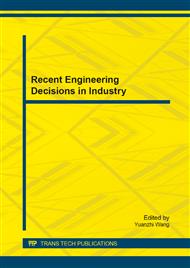[1]
A.G.M. Strollo, E. Napoli: IEEE Transactions on Electron Devices Vol. 48(9) (2001) p.2161.
Google Scholar
[2]
P.N. Kondekar, C.D. Parikh, M.B. Patil: IEEE 33rd Annual Power Electronics Specialists Conference (2002) p.1769.
Google Scholar
[3]
R.P. Zingg: IEEE Transactions on Electron Devices Vol. 51(3) (2004) p.492.
Google Scholar
[4]
P.N. Kondekar: International Conference on Microelectronics (2010) p.495.
Google Scholar
[5]
Bei Liang, Fa-shun Yang, Zhao Ding, Xing-hua Fu: International Conference on Electronics, Communications and Control (2011) p.467.
Google Scholar
[6]
Ming Qiao, Wen-Lian Wang, Zhao-Ji Li, Bo Zhang: IEEE 11th International Conference on Solid-State and Integrated Circuit Technology (2012) p.1.
Google Scholar
[7]
Wen-Yi Chen, Ming-Dou Ker, Yeh-Ning Jou, Yeh-Jen Huang, Geeng-Lih Lin: IEEE 16th International Symposium on the Physical and Failure Analysis of Integrated Circuits (2009) p.41.
DOI: 10.1109/apccas.2008.4745960
Google Scholar
[8]
Shen-Li Chen, Tzung-Shian Wu: International Journal of Energy Science Vol. 3(5) (2013) p.349.
Google Scholar
[9]
V. Parthasarathy, V. Khemka, R. Zhu, J. Whitfield, R. Ida, A. Bose: 14th International Symposium on Power Semiconductor Devices and ICs (2002) p.265.
DOI: 10.1109/ispsd.2002.1016222
Google Scholar
[10]
Lingli Jiang, Ming Qiao, Zhaoji Li , Bo Zhang: International Conference on Communications, Circuits and Systems (2009) p.638.
Google Scholar
[11]
M. Shrivastava and H. Gossner: IEEE Transactions on Device and Materials Reliability Vol. 12(4) (2012) p.615.
Google Scholar
[12]
Shen-Li Chen and Min-Hua Lee: American Applied Sciences Research Institute (AASRI) Procedia (2013) in press.
Google Scholar
[13]
Jian-Hsing Lee, S.H. Chen, Y.T. Tsai, D.B. Lee, F.H. Chen, W.C. Liu, C.M. Chung, S.L. Hsu, J.R. Shih, A.Y. Liang, K. Wu: 19th International Symposium on Power Semiconductor Devices and IC's (2007) p.173.
DOI: 10.1109/ispsd.2007.4294960
Google Scholar
[14]
M. -D. Ker, C. -L. Hou, C. -Y. Chang, and F. -T. Chu: 11th International Symposium on the Physical and Failure Analysis of Integrated Circuits (2004) p.209.
Google Scholar
[15]
Z. Piatek, J.F. Kolodziejski, W.A. Pleskacz: IEEE Design and Diagnostics of Electronic Circuits and Systems (2007) p.1.
DOI: 10.1109/ddecs.2007.4295323
Google Scholar


